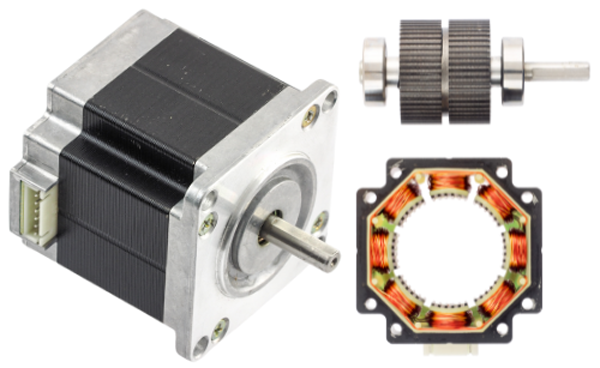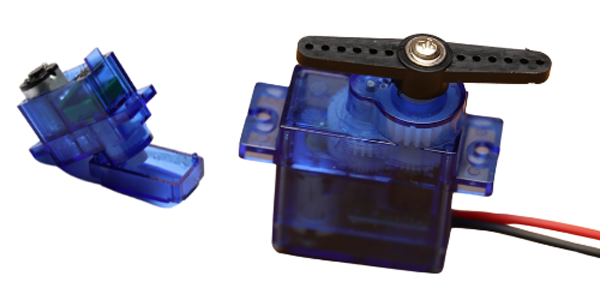
When building a robot, one of the pivotal decisions you’ll make is when choosing the right type of motors. Motors are critical for any robotic system, and determine its movement and precision. Two of the most popular types of motors for robotics rojects are stepper motors and servo motors. Each has its unique advantages and applications, making the choice between them crucial for the success of your project. Let’s delve into the world of steppers and servos to help you make an informed decision for your next robotics adventure.
Stepper Motors 101

Stepper motors are known for their precision and reliability. They operate by dividing a full rotation into a large number of steps, allowing for precise control over position and speed without the need for feedback systems. This characteristic makes stepper motors an excellent choice for applications where controlled movement is essential, and the load is consistently within the motor’s capacity.
Advantages of Stepper Motors:
- Precision: Offers precise control over movement by dividing a rotation into steps.
- Simplicity: Operates without the need for an external feedback system, simplifying the design and control circuitry.
- Cost-Effectiveness: Generally more affordable than servo systems, making them a great option for budget-conscious projects.
Ideal Applications:
3D printers, CNC machines, and other applications where precise positioning is crucial.
Servo Motors 101

On the other hand, servo motors are known for their speed and efficiency. They incorporate feedback systems, typically using encoders, to adjust the position and speed based on the feedback received. This allows servo motors to correct any discrepancies between the desired and actual position, making them highly accurate and responsive.
Advantages of Servo Motors:
- High Performance: Capable of high speeds and accelerations, providing dynamic response to control inputs.
- Feedback Control: The built-in feedback system allows for precise control of position, speed, and torque.
- Efficiency: Only uses energy to move to the desired position, then adjusts to maintain it, making them more efficient in dynamic applications.
Ideal Applications:
Robotic arms, drones, and applications requiring high-speed, accurate positioning, and dynamic load changes.
Steppers vs. Servos: How to Choose?
- Consider Precision and Control Needs: If your project requires precise steps and less complexity in control, stepper motors are your go-to. For applications demanding high precision with feedback and dynamic speed control, servos are the better choice.
- Evaluate the Load and Speed Requirements: Stepper motors perform well under a constant load but can lose steps under sudden load changes. Servo motors can adapt to changing loads and maintain position accuracy, making them suitable for applications with dynamic load conditions.
- Budget Constraints: Generally, stepper motors are more cost-effective, both in terms of initial investment and maintenance. Servo motors, while more expensive, offer greater efficiency and performance, which might justify the higher cost in the long run.
- Complexity and Integration: Consider the complexity of integrating the motor into your system. Stepper motors offer simplicity and ease of use, while servo motors require more sophisticated control strategies due to their feedback mechanisms.
Which Motors Will You Choose?
Choosing between stepper and servo motors for your robotics project depends on a balance of precision, control, load requirements, budget, and complexity. By carefully considering these factors, you can select the motor type that best aligns with your project’s goals, ensuring your robot performs optimally in its intended environment. Whether you opt for the precise steps of a stepper or the dynamic control of a servo, understanding the strengths and applications of each motor type is a crucial step in the exciting journey of robotics development.


